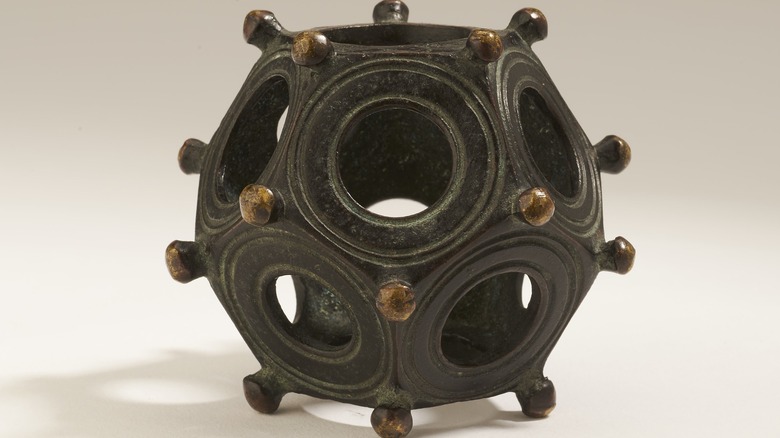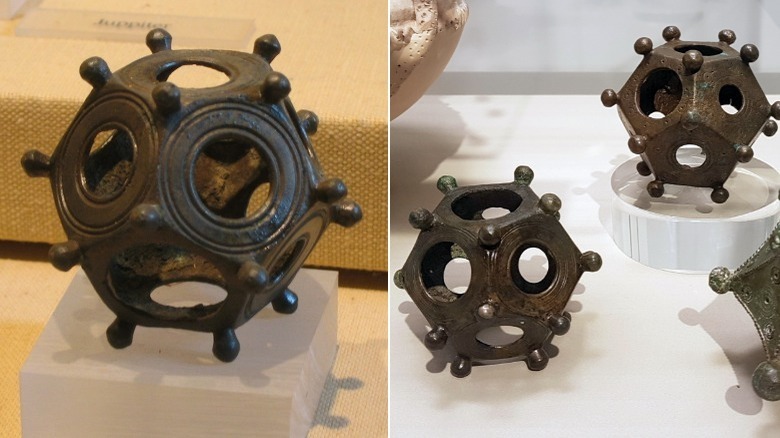Why This Ancient Roman Object Still Remains A Mystery
At first glance, the above image might look like the model of a molecule you'd find in a science museum. While the visual parallels are striking, you'd be incorrect. The mysterious artifact is actually known as a "Roman dodecahedron," and it's about 1,800 years old.
According to Fox News, Roman dodecahedra are 12-sided objects made of bronze (and occasionally stone). Their 12 faces are pentagonal, with circular holes of varying sizes in the middle of each face, plus knobs protruding from each vertex. Roman dodecahedra range in size from roughly two to five inches, and vary slightly in their construction — but all follow the same general design.
Per Mental Floss, the first Roman dodecahedron was discovered in England in 1739. Since then, over 100 similar objects have been unearthed across Europe, and are thought to have been created from A.D. 100 through the 400s — roughly between the Roman Empire's peak and its fall. These 12-sided metallic objects are fascinating in their design, and surprisingly well crafted given their age. But naturally, seeing these objects leads to an obvious question: Just what the heck are these things used for?
We have no idea. Fox News explains that no documented sources from the Roman era ever reference these dodecahedra — let alone explain their purpose. So archaeologists and history nerds alike have put forward a number of theories (as well as some pretty wild guesses).
We still don't know what Roman dodecahedra were for
As Fox News explains, theories about Roman dodecahedra have varied greatly. Maybe they functioned as dice or toys. Maybe they were purely decorative, or were crafted to have some sort of religious significance. Or maybe the dodecahedra were candle-holders, explaining the holes.
Luckily, we don't have to make uneducated guesses, as we do have a few clues to work with. One such clue, per Mental Floss, is that several Roman dodecahedra were found near coins. Perhaps the holes in the objects were used to measure different types of coins, potentially as a means to detect counterfeits. That seems unlikely, though, given that the dozens of unearthed dodecahedra have varied in size and clearly lacked any standardization. Instead, it's probably safer to assume that the dodecahedra were considered valuable and stored alongside coins as a result.
Another clue: Similar dodecahedra made of gold have been found in Southeast Asia. Louis Malleret, a French archaeologist, concluded that the dodecahedral design likely spread to Asia via European trade routes, and that Asian dodecahedra were mostly used for decorative purposes. This suggests that Roman dodecahedra may have been decorative as well.
But several creative internet users have found another use for the objects — as a knitting tool! Search "Roman dodecahedron knitting" on YouTube and you'll find several people who have recreated the ancient objects, then used them to thread yarn into gloves. Given their holes and knobs, the dodecahedra seem to work very well for knitting, so it's quite possible that this is exactly what the Romans used them for many centuries ago.

